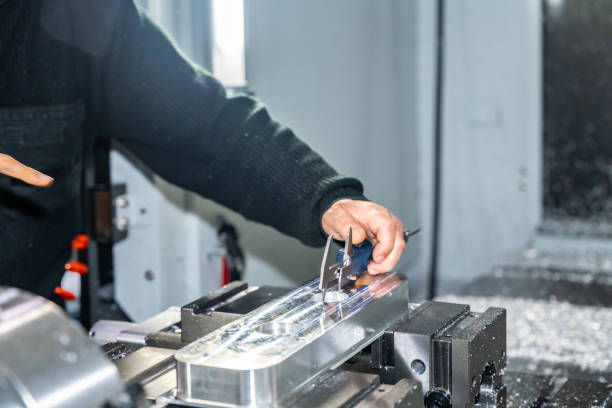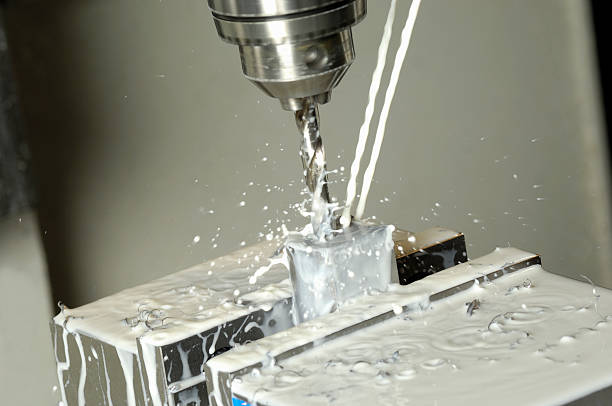- Nov 17, 2025
In the world of product development, efficiency, speed, and precision are essential. Whether you’re working with startups, established companies, or manufacturers, low-volume CNC machining offers a game-changing solution for developing prototypes. Instead of waiting for large-scale production, businesses can leverage this process to create accurate prototypes with faster turnarounds and reduced costs.
Low-volume CNC machining is ideal for small batch production or prototypes, especially when businesses need to test a design before committing to mass production. But what exactly makes low-volume CNC machining such a powerful tool in prototype development? In this article, we’ll explore the key benefits and how it can improve the overall product development process.
What is Low-Volume CNC Machining?
Low-volume CNC machining refers to the process of using computer-controlled machines to produce small quantities of parts (typically ranging from one to a few thousand units). It’s a highly efficient and accurate process used in the manufacturing of prototype parts, allowing businesses to validate designs without incurring the high costs associated with large-scale production.
Using computer-aided design (CAD) software, a CNC machine reads a design file and precisely shapes material (such as metal, plastic, or composite) into the desired form. Unlike traditional manufacturing, CNC machining can produce complex geometries with tight tolerances, making it perfect for prototype development.

Key Benefits of Low-Volume CNC Machining for Prototype Development
1. Faster Turnaround Times
One of the biggest advantages of Oakon's low-volume CNC machining is speed. Traditional manufacturing methods, like injection molding, can take weeks or even months to set up and produce a mold. With CNC machining, prototypes can be produced much more quickly—often in just a few days.
Speedy Prototyping: With CNC machining for prototypes, manufacturers can create functional prototypes in a fraction of the time it would take with other methods.
Rapid Iteration: Faster turnaround times allow for quicker iterations, making it easier to test multiple designs or make adjustments on the fly.
This speed is crucial for companies that need to bring products to market quickly or respond to market demands.
2. Cost-Effective Solution for Small Batches
Traditional manufacturing methods like injection molding require expensive mold creation, making them impractical for small batch production. In contrast, low-volume CNC machining does not require specialized molds, making it an ideal solution for prototyping and low-volume production.
Reduced Setup Costs: The absence of mold costs means lower upfront costs for production.
Affordable Small Batches: Whether you need 10 units or 500, low-volume CNC machining allows for economical production runs without the need for a significant investment.
For companies testing a new product or design, this cost-effectiveness is a major advantage.
3. High Precision and Accuracy
Precision is key when developing prototypes, and low-volume CNC machining excels in this area. CNC machines offer high tolerance levels, ensuring that prototypes are created with exceptional accuracy and attention to detail.
Tight Tolerances: CNC machines can create prototypes with tolerances as tight as 0.005 inches (0.127 mm), ensuring that parts meet the exact specifications of the design.
Complex Geometries: CNC machines can produce parts with intricate shapes, which might be difficult or impossible to achieve using other methods.
This precision ensures that the prototype performs as expected during testing, allowing businesses to identify design flaws early and make necessary improvements.

4. Greater Material Flexibility
Another benefit of low-volume CNC machining is its versatility in terms of materials. CNC machines can work with a wide variety of materials, including metals, plastics, composites, and even wood.
Wide Material Options: Whether your prototype requires aluminum, stainless steel, or ABS plastic, CNC machining can accommodate the material that best suits your design and functionality needs.
Material Testing: Low-volume CNC machining allows companies to test different materials for their prototypes, which can be crucial for final product performance.
This flexibility is particularly important for industries that rely on material testing, such as automotive, aerospace, and medical device manufacturing.
5. No Need for Specialized Molds or Tools
Unlike traditional manufacturing, low-volume CNC machining does not require specialized molds, which can be both costly and time-consuming to produce. This reduces the need for tooling and lowers overall production costs.
Tooling-Free Production: With CNC machining, businesses don’t need to create expensive molds or tooling, which can save both time and money.
Simpler Process: The process of setting up a CNC machine for low-volume production is much simpler compared to traditional methods, which require mold design and creation.
This makes low-volume CNC machining a more accessible option for startups, small businesses, and companies looking to prototype without high initial investments.
6. Versatile Applications Across Multiple Industries
Low-volume CNC machining can be applied across a variety of industries, from consumer goods to automotive, medical devices, and electronics. It is especially valuable for companies that need prototypes that meet high precision standards.
Automotive Industry: Creating parts for testing before committing to full production.
Medical Devices: Developing prototypes with specific material requirements for performance and safety.
Consumer Electronics: Prototyping small, intricate parts used in devices like smartphones or wearables.
This versatility makes CNC machining ideal for any industry that requires high-quality, accurate prototypes.

Conclusion:
Low-volume CNC machining has proven to be an invaluable tool for prototype development, offering faster turnaround times, cost-effectiveness, high precision, and material flexibility. By leveraging this technique, businesses can test their designs quickly and affordably without the need for expensive molds or tooling. This makes CNC machining a must-have resource for companies looking to innovate and bring products to market faster.
Whether you’re a startup or an established company, Oakon's low-volume CNC machining allows you to create high-quality prototypes that meet your exact specifications, providing a competitive edge in today’s fast-paced market.
FAQ:
1. What is the difference between low-volume CNC machining and traditional CNC machining?
Low-volume CNC machining focuses on producing small quantities of parts, while traditional CNC machining is often used for larger production runs. Low-volume machining is ideal for prototyping and testing designs.
2. How long does it take to create a prototype using low-volume CNC machining?
Prototypes can typically be created in a matter of days, depending on the complexity of the design. This is significantly faster than traditional methods like injection molding, which can take weeks.
3. Can low-volume CNC machining work with any material?
Yes, low-volume CNC machining can work with a wide range of materials, including metals, plastics, composites, and more. This flexibility makes it ideal for various industries that require material testing for prototypes.


